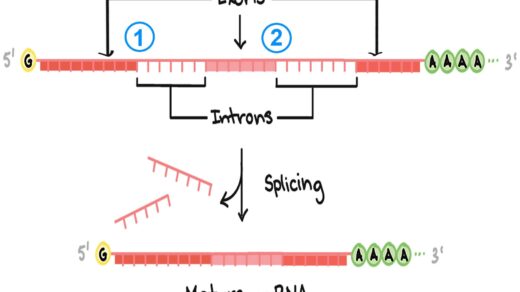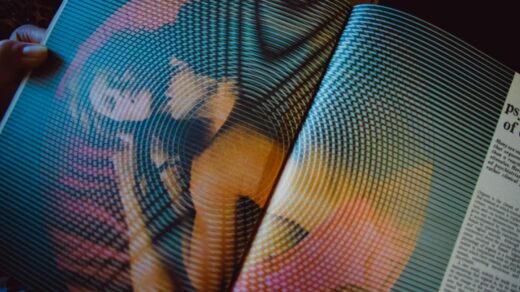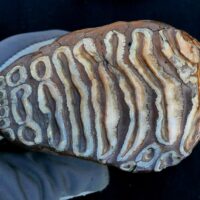Exam-induced anxiety and stress are recognized as common stressors among postsecondary students… The research published in NIH aimed to investigate how these stressors affect students by measuring alterations in stress levels, electroencephalogram (EEG) profiles, and memory scores around examination periods . The central hypothesis was that cortisol levels, memory scores, and EEG profiles would all demonstrate changes near examinations.
The study involved twenty university students, primarily undergraduate students recruited from Laurentian University, with ages averaging 21 years (±3 years) . Nineteen students participated, consisting of 8 males and 11 females . Participants were measured multiple times during the semester. On two separate occasions – one approximately 5 weeks before a scheduled exam and another during their examination period – each participant provided a saliva sample for cortisol testing, had their EEG recorded, and completed a memory test [3-5]. The experiment received ethical approval from the Laurentian University Research Ethics Board (LUREB; File No. 6016071) .
Memory Performance Under Pressure
Memory performance was assessed using a test where participants viewed a collage containing 17 black-and-white images of nondescript objects for 30 seconds . Objects included items such as a baseball bat, a fruit basket, a candy cane, and a fork . After a 20-minute delay, participants were asked to recall how many images they remembered.
The average recall score during the nonexam period was 74.7% accuracy. However, the average score during the exam period was 63.8% recalled. For the 18 students who completed both trials, a paired-samples t-test showed a significant decrease in memory performance when the test was completed closer to their examination (t = 2.96, p < 0.05).
Cortisol Levels: No Significant Changes Observed
Saliva samples were collected during both the nonexam and exam periods. To account for the natural fluctuation of cortisol levels throughout the day, all samples were taken in the afternoon. The collected saliva was stored at –20 °C for one month before analysis, a method shown not to deteriorate cortisol concentration. Cortisol concentration was analyzed using an enzyme-linked immunosorbent assay (ELISA).
A paired t-test was conducted to determine if cortisol levels were affected by temporal proximity to a midterm examination. The results indicated no significant difference in cortisol levels (p > 0.05), suggesting that cortisol levels were not altered during the midterm examination period in this study. While there was no significant interaction between cortisol levels and exam proximity, an exploratory analysis combining memory, cortisol, and neuroelectric activity data revealed significant relationships. Cortisol levels were negatively correlated with memory performance (Rho = −0.48).
Unpacking Brain Activity with EEG
EEG was utilized to measure electrical activity in the participants’ brains [4, 10]. An EEG cap with 19 sensors was placed on the scalp according to the 10–20 international standard, with linked earlobes serving as reference sites. Brain activity was recorded for approximately 10 minutes during each trial, consisting of 5 minutes with eyes closed and 5 minutes with eyes open. Data was recorded at a sample rate of 250 Hz and filtered to attenuate various artifacts . After artifact correction, the sample size available for further processing was 14 participants. Eyes-closed data were segmented into thirty 5-second segments for analysis.
Current source densities (uA/mm2) were derived for specific regions of interest (ROIs) using sLORETA software . The ROIs were the parahippocampal gyrus, the medial frontal gyrus, and the middle frontal gyrus . The analysis focused on discrete 1 Hz bins between 0 and 45 Hz to examine brain activity at a finer frequency resolution than traditional EEG bands. A gyrus rectus ROI was also included in the sLORETA analysis.
Key Findings on Brain Activity and Exam Proximity:
A significant increase in 19–20 Hz current source density was observed within the bilateral medial frontal gyri around the time of the examination period.
The magnitude of the difference in memory performance between the two trials was significantly and negatively correlated with 19–20 Hz current source density within the middle frontal gyrus** (Rho = −0.54, p < 0.05). This finding suggests that individuals whose memory scores were consistent between the exam and nonexam trials displayed an increase in middle frontal gyrus activation during the examination period . The middle frontal gyrus is known to be important for working memory, and heightened activity in this area might be necessary to maintain performance when stressed.
A positive correlation was found between time-to-examination and current source density within the right parahippocampal gyrus. The right parahippocampal gyrus showed a higher current source density in individuals who had not yet written their exams compared to those who had already completed them. This region is part of the limbic cortex, which is included in the limbic system, a system activated during a stress response. This finding is consistent with the expectation that students facing upcoming exams would experience more stress than those who had finished.
Connecting Memory, Cortisol, and Brain Activity
Exploratory analysis consolidating memory, cortisol, and neuroelectric activity data (after controlling for the time of measurement) revealed further significant relationships.
- Cortisol levels were negatively correlated with memory performance (Rho = −0.48).
- 5–9 Hz parahippocampal activity was positively correlated with memory performance (Rho = 0.54, p < 0.05).
- 5–9 Hz parahippocampal activity was negatively correlated with cortisol levels.
These results suggest that increasing cortisol levels are associated with lower memory performance, which may or may not be dependent on 5–9 Hz parahippocampal activity in the left hemisphere. The parahippocampal gyrus plays a significant role in memory formation and retrieval . High cortisol levels released during a stress response are known to disrupt these structures and impair their capability to retrieve information.
Conclusions
The data presented demonstrate a strong relationship between memory performance, activity in the parahippocampal gyrus, and cortisol levels . The parahippocampal gyrus, the medial frontal gyrus, and the middle frontal gyrus were all found to be significantly influenced by the presence or proximity of an exam. All three regions are correlated with memory performance and exam proximity. The findings provide further support for the role of these brain regions in memory and stress and indicate that the stress response, including the release of cortisol, can negatively impact memory performance . This can affect examination results by disrupting brain areas crucial for memory retrieval.
The study concludes that stress management could be an invaluable tool. The ability to predict which brain regions will show the greatest changes during increased stress, combined with their association with memory and performance, suggests that optimizing testing times based on EEG measurements could potentially increase examination performance and provide a more accurate assessment of a student’s aptitude . While more testing is required, these preliminary data are considered revealing
Research Credit
NIH:





















